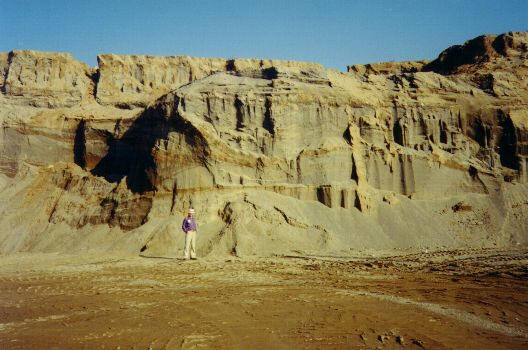The glacio-fluvial sand and gravel deposits are formed by meltwater runoff within or in the proximity of the glacier. The deposits can be classified accordingly:
| Eskers: in tunnels and crevasses within the ice | |
| Kames: in ice-bound holes within the ice | |
| Outwash: large aprons in front of glacier front | |
| Deltas and shorelines: glacial streams emptying into ice-bound lakes. |

All of the above tend to have clean, silt and clay free sands and gravels. Their quality is largely a function of the provenance or rock material.
Picture at right is an example of a glacio-fluvial deposit, a sand and gravel pit, formed as a deltaic fain into a glacial lake Maumee, Leamington, ON. The pit is mainly sand, with some gravel layers.